Winter weather brings its own set of challenges, and for those responsible for snow removal, having the right equipment is crucial. One key component of a snow plow that often goes unnoticed but plays a vital role in efficient snow removal is the cutting edge. Snow plow cutting edges come in various materials, each with its unique set of characteristics. In this blog post, we’ll explore different cutting edge materials and discuss when it’s best to use each one for optimal snow plowing performance.
Steel Snow Plow Cutting Edges
Steel is one of the most common snow plow cutting edge material available. With that being said there are many varieties of steel available that play into the effectiveness and performance of the cutting edge. Generally, the harder the steel, the longer it lasts. KAGE Innovation offers high carbon steel cutting edges standard on all of its snow blades and pushers. It also offers a harder steel known as Hardox (500) steel as an option for its bolt on sectional AdvantEdge cutting edge product. Both options are equipped with a DOT punch meaning they are compatible with highway plows. The AdvantEdge cutting edge can also be retrofit to be used on non-standard snow blades.
Pros
- Durability – Steel cutting edges are highly durable and can withstand heavy use. They are resistant to wear and can handle abrasive materials, making them suitable for challenging conditions.
- Longevity – Steel plow edges have a longer lifespan than softer materials. This durability means less frequent replacements, reducing maintenance costs over time.
- Versatility – These types cutting edges are versatile and well-suited for use on various surfaces, including paved roads and parking lots. They can handle a range of snow and ice conditions effectively.
- Cost-Effectiveness – Steel cutting edges are often more cost-effective than some alternative materials. The initial investment pays off over time due to their extended lifespan. Keep in mind that you will likely pay a little more up front for longer-lasting high-end steel edges.
- Resistance to Deformation – Steel maintains its shape and does not deform easily, providing consistent performance in snow removal operations.
Cons
- Surface Impact – Steel cutting edges can be harsh on surfaces. They may cause damage to sensitive or decorative pavements, sidewalks, or other surfaces where aesthetics is a concern.
- This can be combatted by using a floating or live steel cutting edge such as the AdvantEdge.
- Weight – Steel can be heavy compared to some alternative materials. This added weight may affect fuel efficiency and overall plow performance, especially in smaller vehicles.
- Noise Level – Steel edges can create more noise during snow plowing operations compared to rubber or polyurethane alternatives. This noise may be a consideration in residential areas or during nighttime operations. It can also be a source of fatigue for the snow plow operator.
- This too, can be reduced by using the AdvantEdge flex steel cutting edge as the spring-loaded sections prevent excess pressure on high points of the road, driveway or parking lot.
- Corrosion – Steel is prone to corrosion over time, especially in areas with high salt content on roads. Regular maintenance, such as cleaning and applying protective coatings, is necessary to prevent rust.
- Limited Flexibility – Steel lacks the flexibility of rubber or polyurethane, making it less forgiving on uneven surfaces. This limitation may result in uneven plowing and increased wear on both the cutting edge and the plow itself.
- Again, the spring-loaded sections of the AdvantEdge floating cutting edge address this issue through the vertical travel of the sections.
Best Time to Use: Ideal for regular snow plowing on paved surfaces such as roads and parking lots. Steel cutting edges are well-suited for areas where contact with hard surfaces is common.
KAGE Innovation offers high carbon steel cutting edges that are:
- 6 inches tall and 5/8-inch thick in lengths of 5′, 6′, 8′ and 9′
- 8 inches tall and 5/8 inch thick in lengths of 5′, 6′ and 7′
Hardox 500 steel cutting edge sections for the AdvantEdge universal bolt-on live cutting edge are:
- 9 inches tall and 5/8 inch thick (not including the floating mechanism) in lengths of 18″ and 24″
Rubber Snow Plow Cutting Edges
Rubber snow plow cutting edges offer advantages in terms of surface protection, reduced noise, and lightweight design. For this reason, some municipalities have required the use of rubber cutting edges to prevent damage to streets and highways. However, their limitations in terms of durability, vulnerability to tearing, potential stiffness in extremely cold weather, and performance in heavy snow conditions should be carefully considered based on the specific requirements of the snow removal job at hand.
Pros
- Surface Protection – Rubber cutting edges are gentle on surfaces, making them ideal for use on delicate pavements, sidewalks, and other areas where preventing damage is crucial. They reduce the risk of scratches and scuffs.
- Reduced Noise – Pliable rubber generates less noise during snow plowing operations compared to steel or carbide counterparts. This can be advantageous in residential areas or during nighttime snow removal.
- Lightweight – Rubber cutting edges are generally lighter than steel, reducing the overall weight of the plow assembly. This can contribute to improved fuel efficiency and better performance, especially for smaller vehicles, such as pickups.
- Easy Installation – Rubber edges are often easy to install. This can save time during maintenance and replacement procedures.
- Versatility – Flexible rubber cutting edges are versatile and can conform to uneven surfaces. They work well in various conditions and are effective for plowing different types of snow.
Cons
- Limited Durability – Rubber cutting edges are not as durable as steel or carbide-tipped alternatives. They wear out more quickly, especially in heavy-duty applications or when exposed to abrasive materials.
- Vulnerability to Tearing – Rubber plow edges are susceptible to tearing, particularly when encountering sharp objects or debris hidden in the snow. This can lead to more frequent replacements.
- Cold Weather Performance – In extremely cold temperatures, rubber often becomes stiff and less effective at conforming to surfaces. This can affect the cutting edge’s performance in very cold climates. It also struggles to scrape in icy conditions and can leave slippery surfaces behind.
- Cost Consideration – While rubber cutting edges can be cost-effective initially, the need for more frequent replacements often result in higher long-term maintenance costs compared to some durable alternatives.
- Limited Use in Heavy Snow – Rubber edges may not perform as well in heavy, compacted snow and ice conditions. Their flexibility, while beneficial on uneven surfaces, may hinder their effectiveness in more demanding scenarios.
Best Time to Use: Perfect for clearing snow on delicate surfaces like decorative pavements, sidewalks, and wooden decks. Rubber cutting edges are less likely to scratch or damage surfaces, making them suitable for areas with aesthetic considerations.
Polyurethane Snow Plow Cutting Edges
Poly snow plow cutting edges offer a versatile and surface-friendly option for many snow removal applications. Harder than rubber and softer than steel, poly cutting edges offer a longer wear life than rubber, but shorter wear life than steel and carbide. Advantages include versatility, reduced noise, chemical resistance, and consistent performance in cold weather. However, potential drawbacks include limited durability in heavy use, challenges in extreme conditions, cost, and considerations regarding weight. Careful evaluation of these factors in the context of specific job requirements will help determine whether polyurethane cutting edges are the most suitable choice for a given snow removal application.
Pros
- Versatility – Polyurethane snow plow cutting edges offer a good balance of durability and flexibility. They are versatile and effective in various snow and ice conditions.
- Gentle on Surfaces – Polyurethane plow cutting edges are gentler on surfaces compared to steel, making them suitable for use on delicate pavements, sidewalks, and other areas where preventing damage is essential. They also reduce the likelihood of catching on ground accessories, such as manhole covers, pavement marking and in-ground lighting. Plus, since poly edges don’t rust, you it won’t leave rust marks on the plowed surface!
- Reduced Noise Level – Like rubber, poly cutting edges generate less noise during snow plowing operations compared to steel alternatives for use in residential areas or during nighttime snow removal.
- Chemical Resistance: Polyurethane is resistant to many chemicals, including de-icing agents. This resistance helps maintain the cutting edge’s integrity and performance over time.
- Consistent Performance in Cold Weather – Polyurethane maintains its flexibility in cold temperatures, ensuring consistent performance even in freezing conditions.
Cons
- Limited Durability in Heavy Use – While polyurethane is durable, it may not withstand heavy use as well as materials like steel or carbide. In extremely abrasive conditions, it may wear out more quickly – especially when used on large, heavy plows. For this reason, it is often only an option for smaller plows intended for skid steers, compact tractors, compact loaders, telehandlers and pickup truck plows.
- Not Ideal for Extreme Conditions – Polyurethane cutting edges may not be as effective as harder cutting edges in extremely heavy, compacted snow and ice conditions. Their flexibility, while advantageous in many situations, may limit their performance in more demanding scenarios.
- Cost – While not as expensive as carbide-tipped edges, poly cutting edges may have a higher initial cost compared to steel or rubber alternatives.
- Weight Consideration – Polyurethane cutting edges can be heavier than rubber alternatives but weigh around 1/3 that of steel edges, depending on the thickness.
Best Time to Use: Great for general snow plowing in diverse conditions over sensitive substrates such as gravel roads and parking lots, dirt driveways, stamped concrete, pavers, parking ramps, expansion joints, cobblestone and brick surfaces or grass-edged areas. Polyurethane cutting edges work well in environments with varying surfaces and temperatures, offering a balanced solution for many situations.
KAGE Innovation’s poly cutting edges are 1 1/2″ thick and are available in 6′, 8′, 9′ and 10′ lengths.
Carbide-Tipped Snow Plow Cutting Edges
When it comes to long-lasting snow plow cutting edges, nothing lasts longer than carbide. Carbide-tipped snow plow cutting edges offer exceptional durability and cutting efficiency, particularly in abrasive conditions. However, potential drawbacks include a higher initial cost, brittleness, the potential for surface damage, weight considerations, and a more complex installation process. Careful consideration of these factors and an evaluation of specific job requirements will help determine whether carbide-tipped cutting edges are the best fit for a particular snow removal application.
Pros
- Exceptional Durability – Carbide-tipped cutting edges are highly durable and resistant to wear. The carbide material is exceptionally hard, providing extended longevity (up to 20x that of high carbon steel and 2x that of Hardox 500 steel) even in harsh conditions.
- Long-Lasting Sharpness – Carbide cutting edges for snow plows maintain sharpness over a more extended period compared to all of the previously-mentioned materials. This reduces the frequency of replacements, contributing to cost-effectiveness in the long run.
- Effective in Abrasive Conditions – Carbide-tipped edges excel in abrasive conditions. They can withstand the impact of abrasive materials without significant wear or damage.
- Improved Cutting Efficiency – The hardness of carbide enhances cutting efficiency, especially in hard-packed snow and ice. Carbide plow edges can provide superior performance in challenging winter weather conditions.
- Resistance to Corrosion – Carbide is resistant to corrosion, making it suitable for areas where exposure to salt or other de-icing agents is common. This resistance helps maintain the cutting edge’s effectiveness over time.
Cons
- Higher Initial Cost – Carbide-tipped cutting edges typically have a higher upfront cost compared to some other materials. While the initial investment may be higher, the long-term durability may offset this cost over time.
- One way to take advantage of carbide while reducing the cost is to use carbide cutting edge life extenders (also known as edge wear extenders). Essentially, these are small sections of carbide tipped cutting edges that are strategically placed on steel cutting edges to prevent the steel from wearing as quickly. With the life extenders
- Brittleness – Carbide is a hard and brittle material, which can make it more susceptible to chipping or breakage when subjected to heavy impacts. Care should be taken to avoid hitting curbs or other hard surfaces directly.
- To combat this brittleness, carbide is often inserted into a steel cutting edge so the steel can protect the carbide from impact while allowing it to work effectively to scrape and resist abrasion.
- Potential for Surface Damage – While carbide-tipped edges are effective in abrasive conditions, they may cause more damage to sensitive surfaces compared to rubber or polyurethane alternatives.
- If surface damage is concern, but you still want the longevity and performance of a carbide cutting edge, consider the AdvantEdge floating cutting edge with carbide sections. This gives you a carbide edge with forgiveness as each spring loaded section will provide optimal scraping pressure throughout the entire length of the blade – regardless of crowns or depressions on the plowing surface.
- Weight Consideration – Carbide-tipped cutting edges are generally heavier than rubber, polyurethane and sometimes even steel alternatives. This additional weight may affect fuel efficiency and overall plow performance, especially for smaller vehicles.
- Complex Installation – Installing carbide-tipped cutting edges may be more complex compared to some other materials. Proper installation is crucial to ensure optimal performance and longevity.
- KAGE’s AdvantEdge carbide sectional cutting edge installs just like it’s Hardox steel version of the product by bolting it one. Holes are pre-drilled to fit a standard DOT highway punch, but it can also retrofit other non-standard bolt patterned plows.
Best Time to Use: Ideal for heavy-duty snow removal in areas with high abrasion, such as highways. Carbide-tipped edges are suitable for prolonged use and offer superior performance in demanding conditions.
KAGE Innovation offers the following carbide cutting edge options:
- AdvantEdge sectional snow plow cutting edge kits to fit 6′, 7′, 8′, 9′, 10′, 11′, 12′, 14′, 16′ and 18′ plows
- 9″-long Centurion Edge Wear Extenders in 6″ and 8″ height options
Choosing the right snow plow cutting edge material is essential for efficient and effective snow removal. Consider the specific needs of the job, the type of surface being plowed, and the prevailing weather conditions when selecting a cutting edge material. Whether it’s the durability of steel, the gentleness of rubber, the versatility of polyurethane, the toughness of carbide-tipped edges, or the enhanced cutting power of serrated edges, the right choice will ensure successful snow plowing operations throughout the winter season.

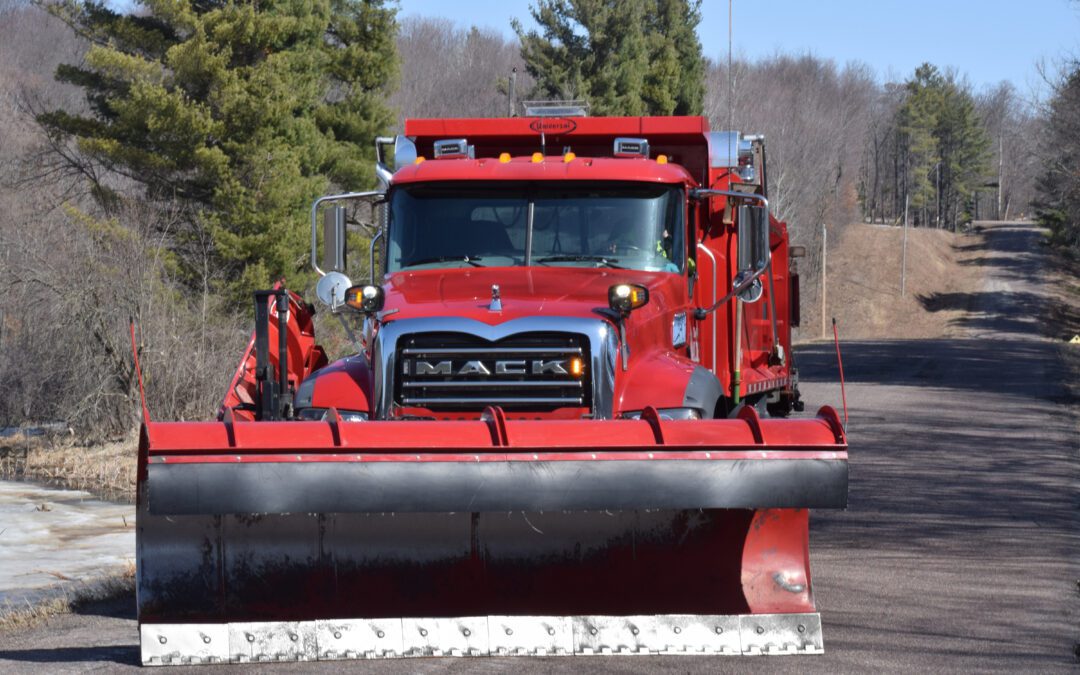
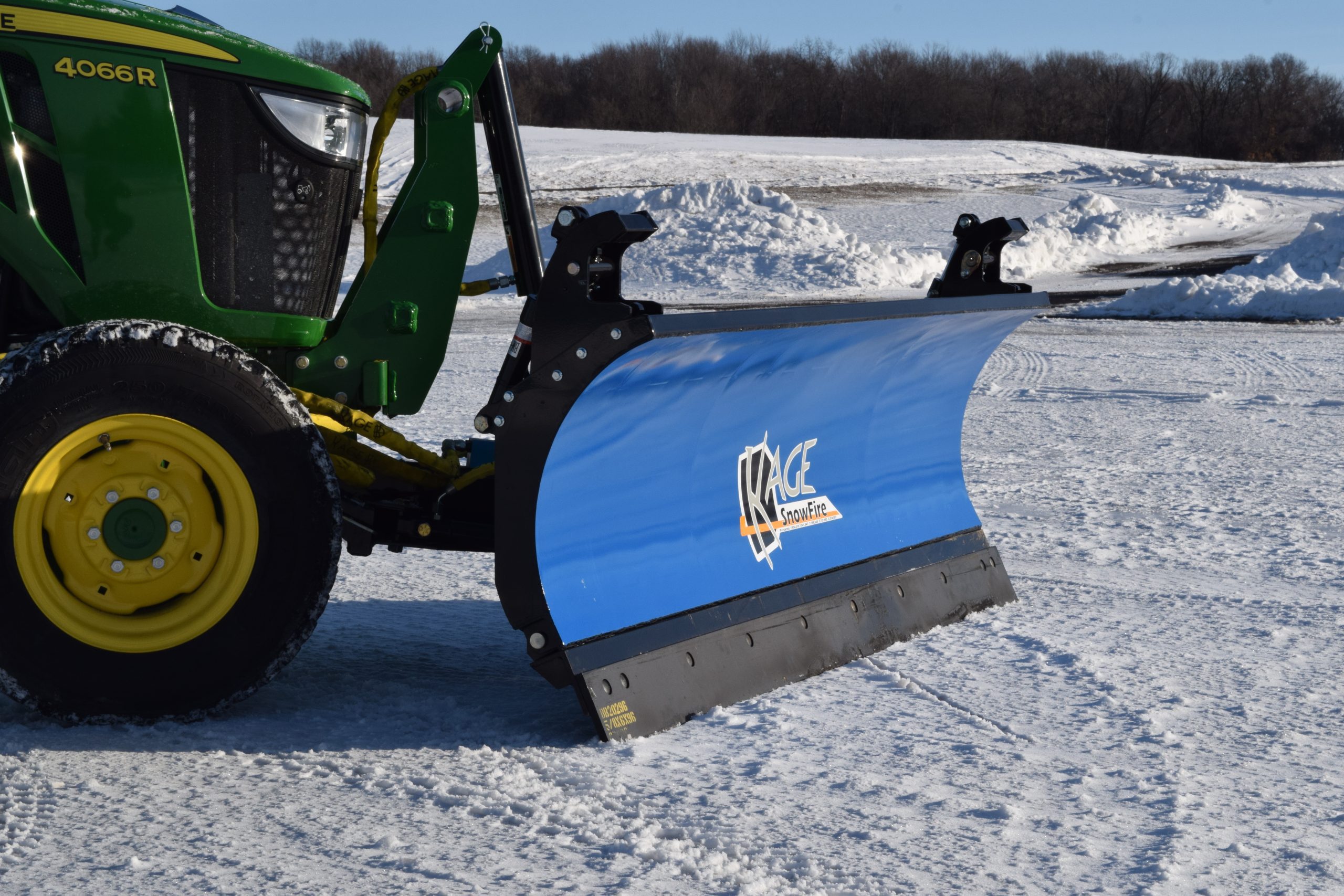
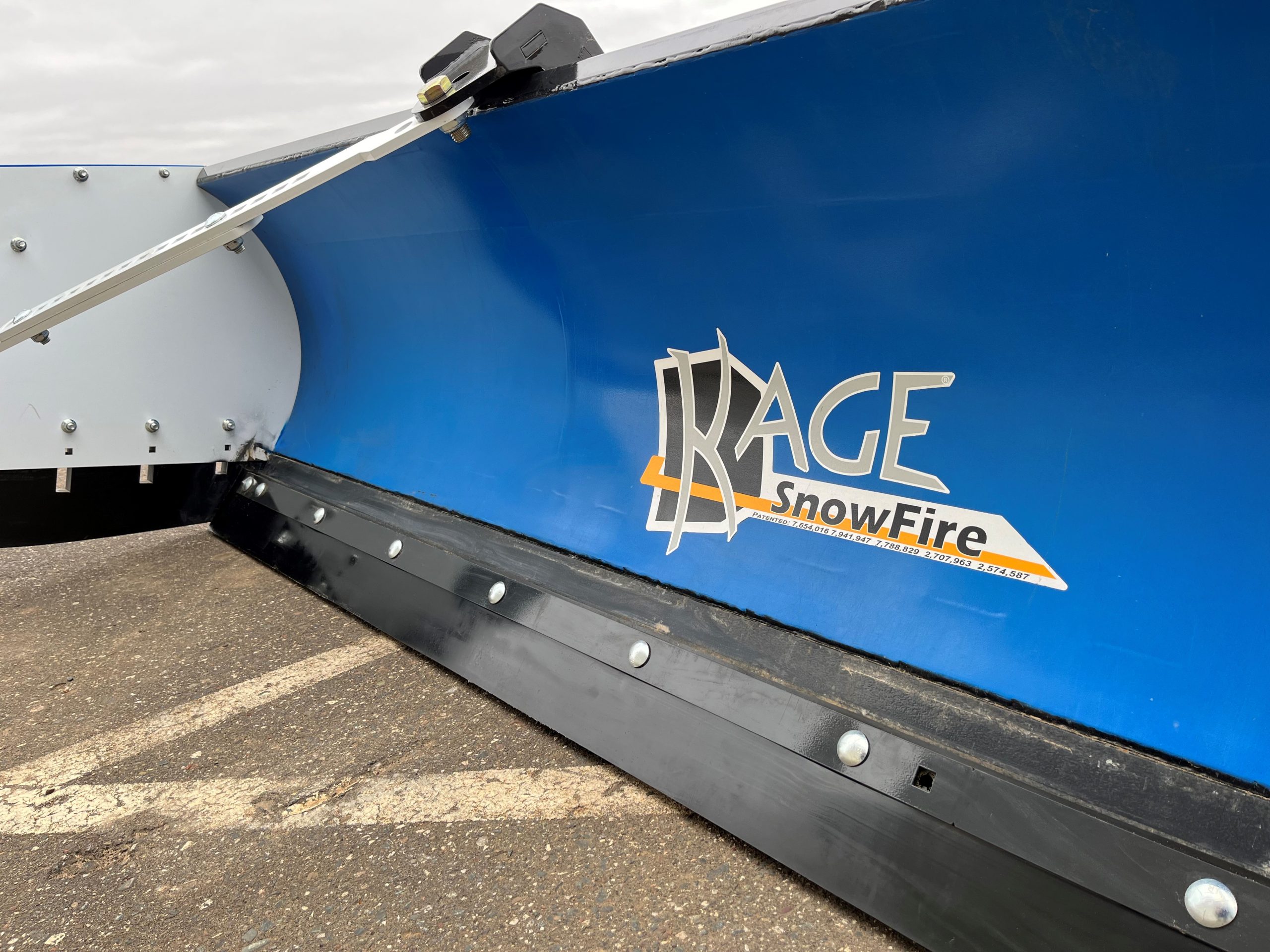
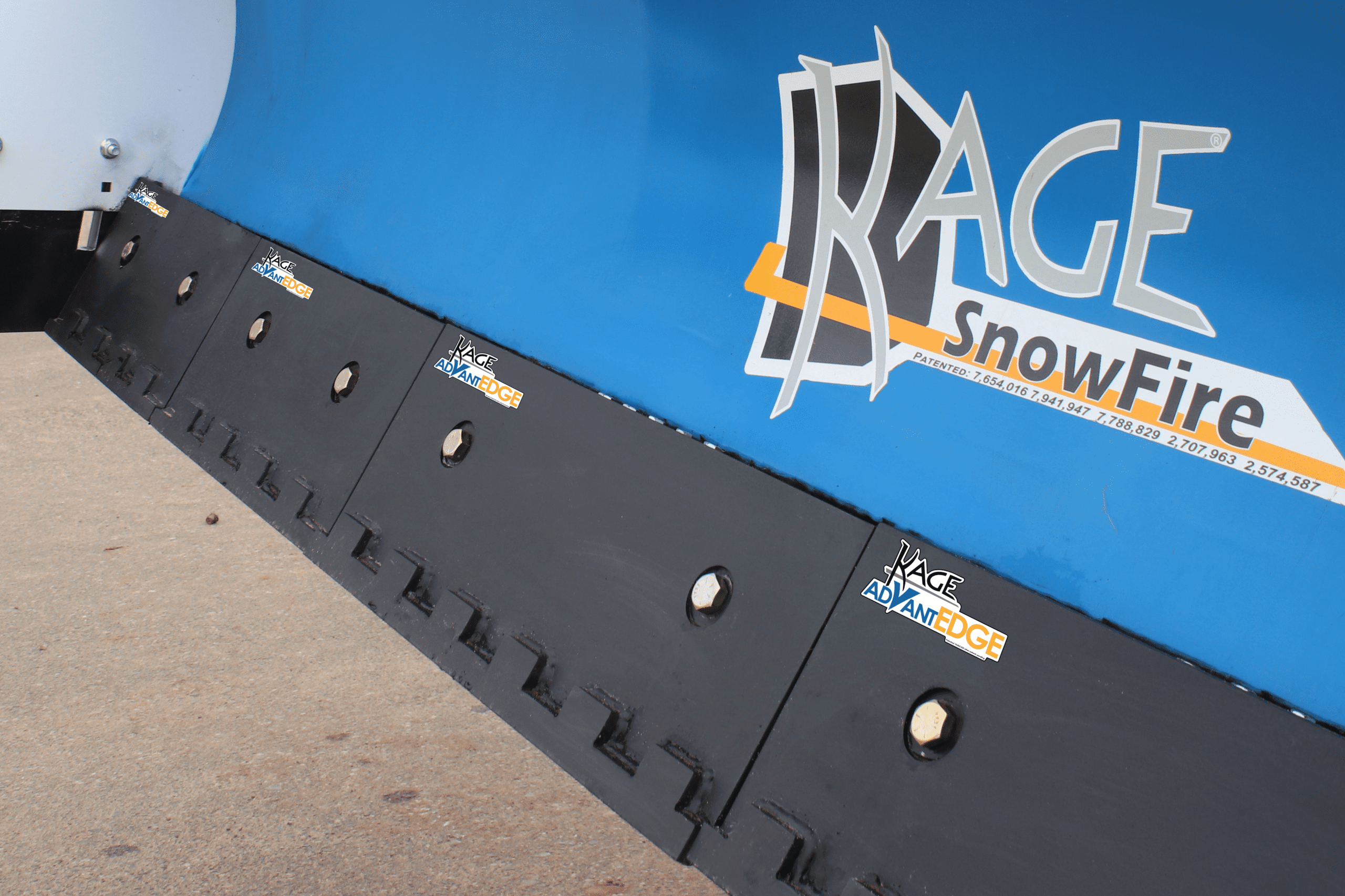
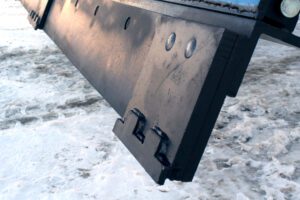
Recent Comments